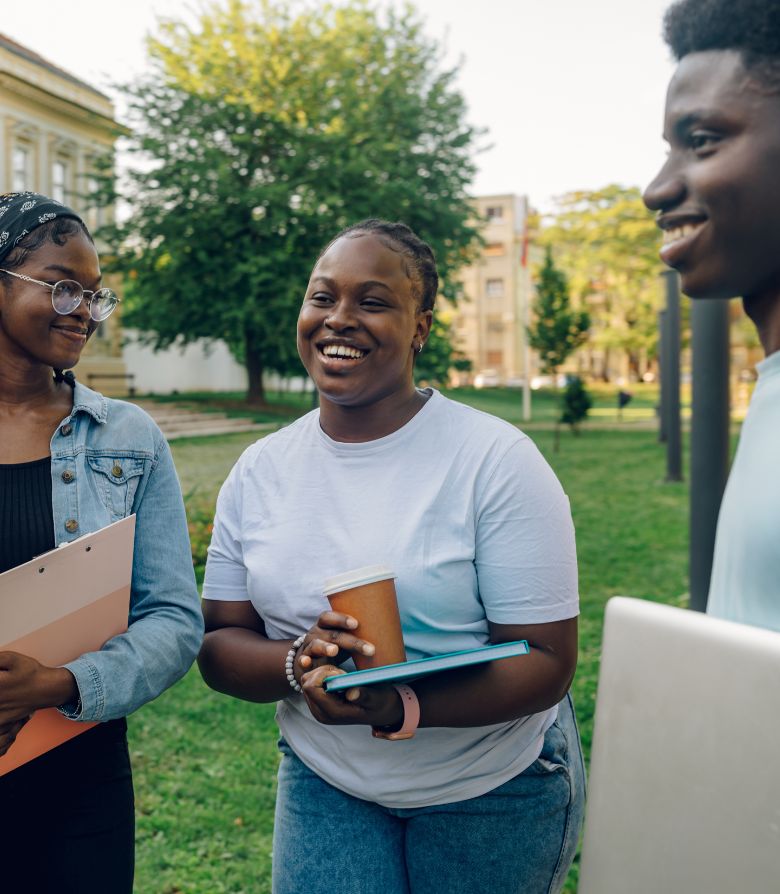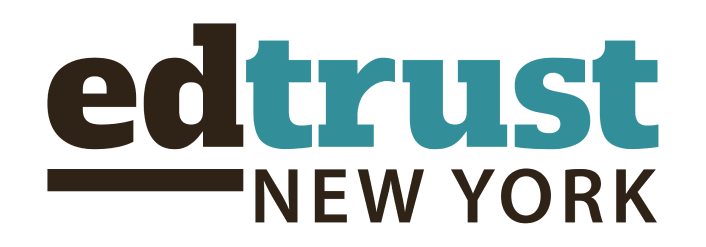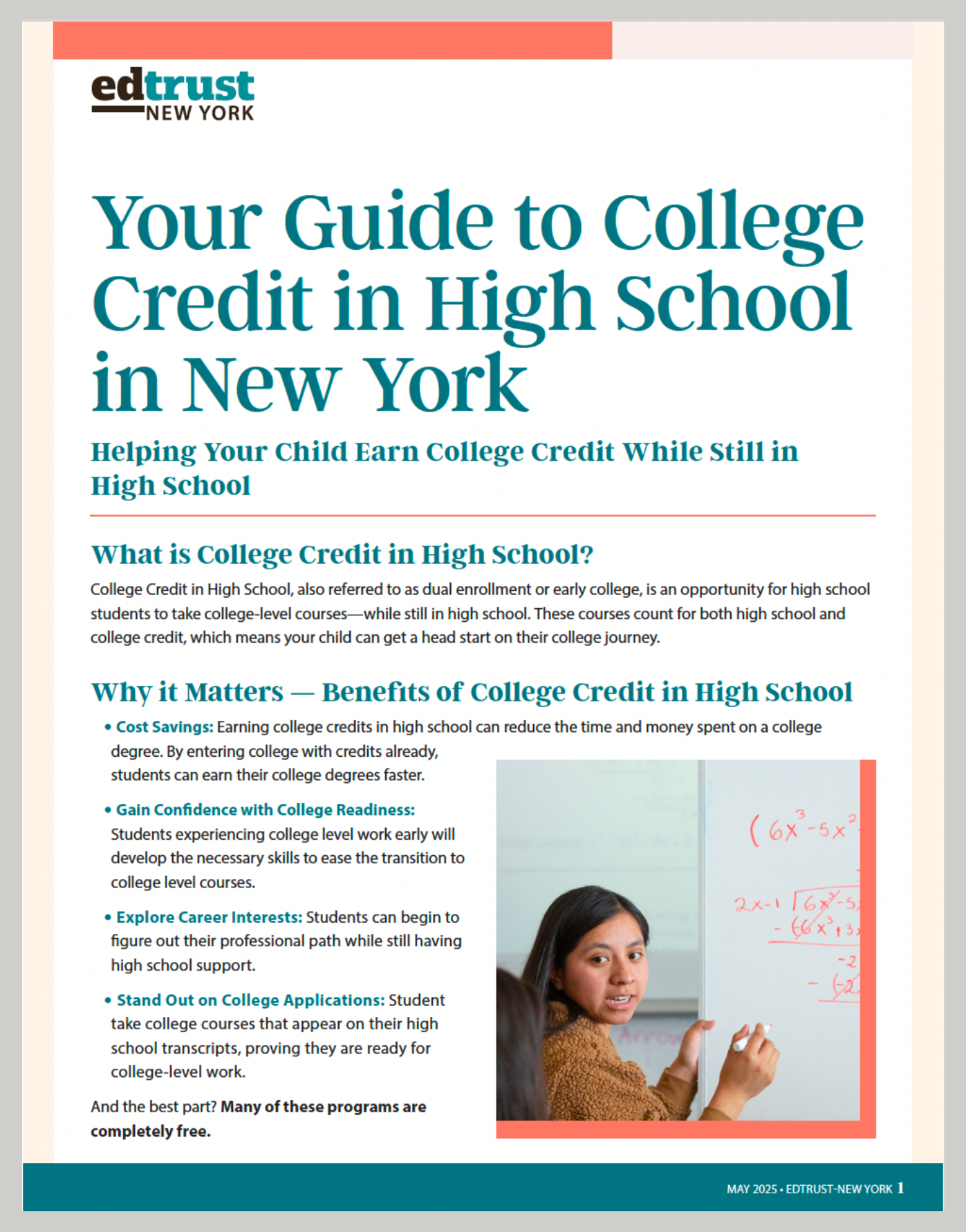College Credit in High School
College in high school programs — programs that allow students to earn college credit through taking college courses offered in partnership between institutions of higher education and high schools — introduce postsecondary options to students early. When students have access to college courses in high school, they are more likely to persist in college and earn a degree. Yet too few students have access to these programs, particularly students of color — especially Black, Latinx, and Native American students, and those from low-income backgrounds.

Our Equity-Centered Approach
We work alongside our partners from the New York Equity Coalition to champion policies that provide equitable access to college credit in high school. We advocate at the state and district level to ensure programs center equity and are accountable to both student performance and postsecondary success. That starts with removing barriers to access for students of color and from low-income backgrounds while increasing data transparency about the access to and outcomes of college credit in high school programs — also known as early college and dual enrollment programs.
Latest Resource
Your Guide to College Credit in High School in New York
This resource guide educates parents and caregivers about college credit in high school programs and how these opportunities can help students save time and money in the future. It explains the different types of programs available — like dual enrollment, early college, and P-TECH — and what families should know to support their students. The guide also offers tips on questions to ask schools and how to make sure college credits will count after high school.
This guide is available in Bengali, Chinese, English, Haitian Creole, Russian, and Spanish.
Data Snapshot
Only
%
of young people in New York City report having access to dual enrollment courses.
In New York
%
of students from low-income backgrounds who took early college courses in high school graduated college in four years, compared to only 23% of their peers.
More Resources
How New York Can Protect Students from Federal Attacks on Higher Education Access
New York has made real progress in breaking down financial barriers to higher education. But now, new anti-student and anti-borrower federal policies sabotage that very progress — pushing higher education further out of reach for the very students New York has fought to support.
Your Guide to College Credit in High School in New York
This resource guide, available in Bengali, Chinese, English, Haitian Creole, Russian, and Spanish, educates parents and caregivers about college credit in high school programs and how these opportunities can help students save time and money in the future.
EdTrust-New York Responds to One House Budget Bills with Support and a Call for Increased Investment in Education Equity
EdTrust-New York believes the state has not invested enough in an equitable, student-centered education system, despite some positive developments in the recently released One House Budget Bill.
EdTrust-New York: New NAEP Data Reveals Crisis in New York Schools with Persistent Gaps for Black and Latinx Students
Except for fourth grade math, New York’s NAEP scores in reading and math have stagnated or declined over the past 25 years. These results make it clear that current approaches, especially in middle grades, are failing students. We cannot continue with the same strategies and expect different outcomes.
EdTrust-New York Responds to NY Gov. Kathy Hochul’s 2025 State of the State Address
EdTrust-New York calls for stronger commitments to educational equity and looks forward to collaborating with the Governor and Legislature to ensure the inclusion of the following proposals in the final 2025 State Budget.
Report: The Promise of Early College Pathways in New York State
New data from the New York Alliance for Early College Pathways (NY4ECP) underscores the significant impact of early college programs in boosting college enrollment, persistence, and graduation rates for New York’s most marginalized students.

